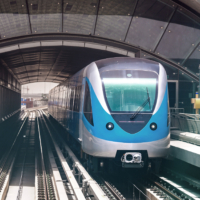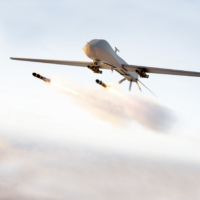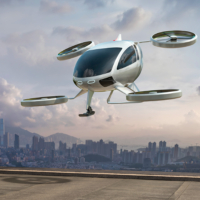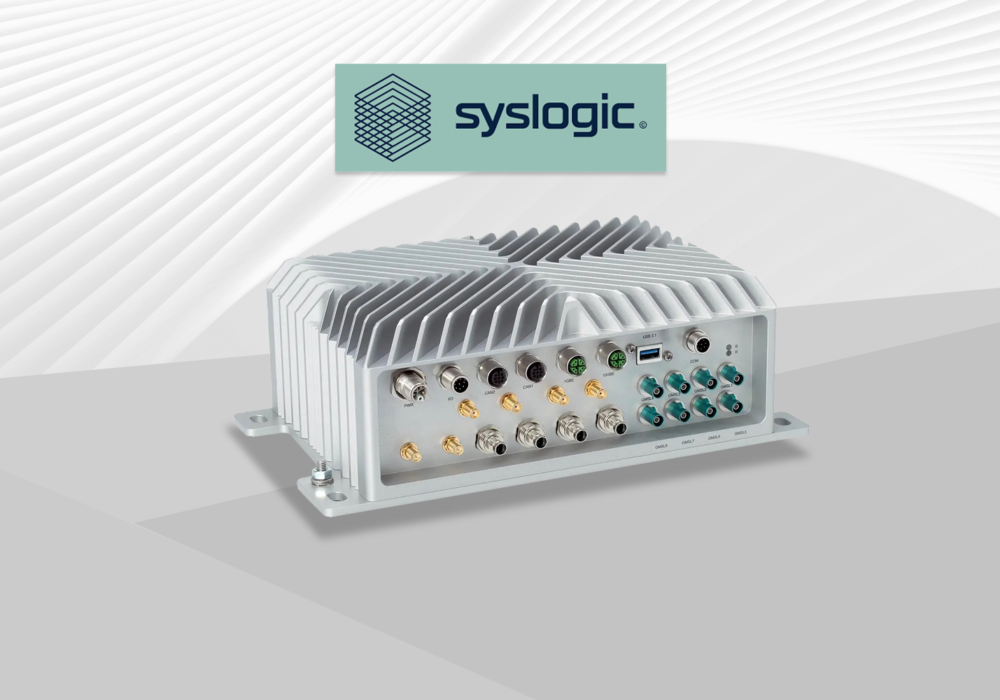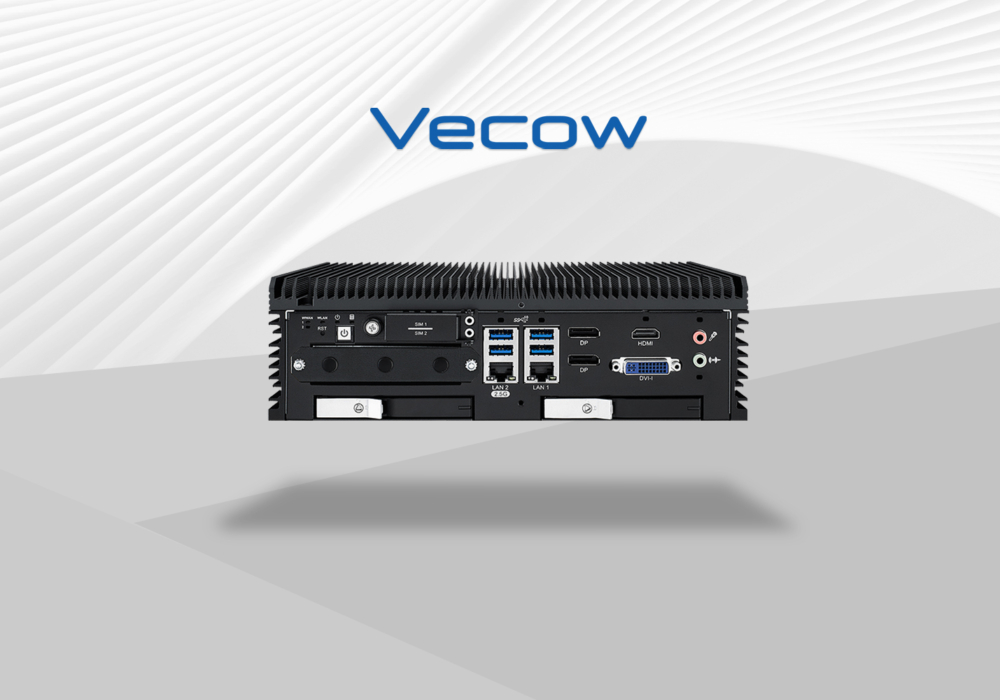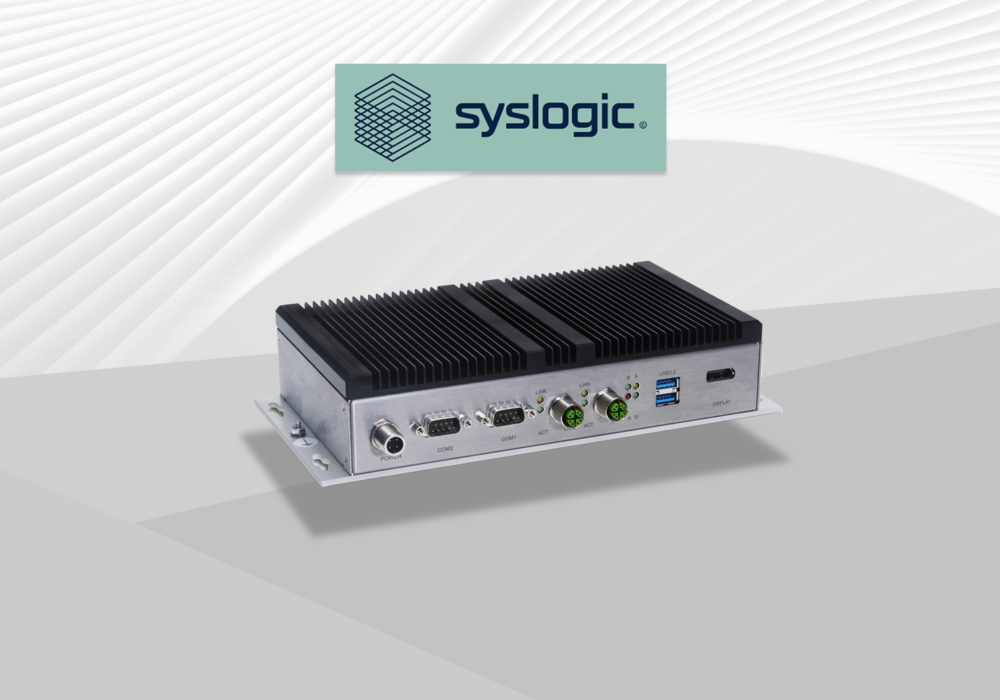In diesem artikel:
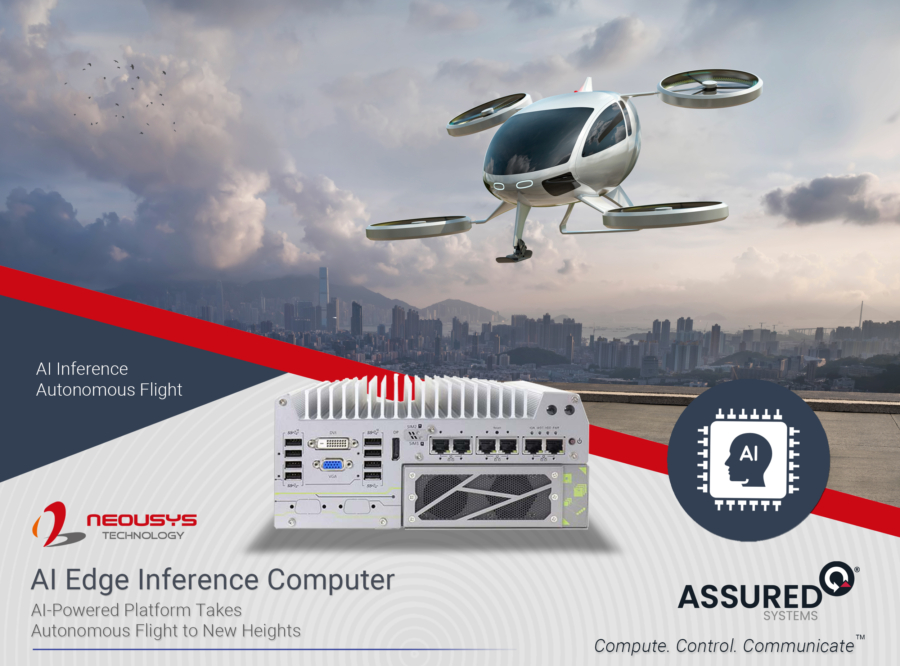
Der Kunde
Statistiken zeigen, dass kleine Flugzeuge im Vergleich zu größeren Verkehrsflugzeugen unfallträchtiger sind, was in erster Linie auf Fehler von weniger erfahrenen Piloten und das Fehlen fortschrittlicher computergestützter Sicherheitssysteme zurückzuführen ist. Technologien wie Verkehrsberatungs-, Vorhersage- und Vermeidungssysteme sind in kleineren Flugzeugen oft nicht vorhanden. Fortschritte im Bereich des Edge Computing und der künstlichen Intelligenz (KI) gehen jedoch auf diese Herausforderungen ein und ermöglichen die Entwicklung autonomer Systeme für Luftfahrzeuge, die von kompakten Edge-KI-Servern betrieben werden.
Ein führendes Unternehmen auf dem eVTOL-Markt (Electric Vertical Takeoff and Landing) wollte eine KI-Inferenzplattform nutzen, um seine Lösungen für maschinelles Lernen und autonomes Fliegen zu entwickeln. Die Innovationen des Kunden sind dabei, die Luftfahrtindustrie zu verändern, indem er eine neue Reihe autonomer Flugzeuge mit einem bis vier Passagiersitzen einführt, die gemeinhin als "Lufttaxis" bezeichnet werden Diese selbstgesteuerten, batteriebetriebenen Flugzeuge sind für Senkrechtstarts und -landungen ausgelegt und läuten die "urbane Luftmobilität" ein, bei der fliegende Autos zu einer Option für Pendler werden. Obwohl die Vorschriften für den zivilen autonomen Flug noch in der Entwicklung begriffen sind, schätzt ein BluePaper von Morgan Stanley Research, dass der Markt für elektrische Senkrechtstarter und -landungen (eVTOL) bis 2040 ein Volumen von 1,5 Billionen Dollar erreichen wird. Das von diesem Innovationszentrum im Silicon Valley entwickelte autonome System wurde auch an großen Verkehrsflugzeugen (mit einem Gewicht von bis zu 315 Tonnen) für automatische Starts und Landungen getestet, um durch Ermüdung und Stress verursachte menschliche Fehler zu verringern.
Die Anforderungen der Bewerbung
Bei der Entwicklung des KI-gestützten autonomen Flugsystems mussten mehrere entscheidende Herausforderungen bewältigt werden:
- Sicherheitsaspekte und Zertifizierungen:
Während autonome Fahrzeuge seit langem im Verteidigungssektor eingesetzt werden, erfordert ihre Ausweitung auf die zivile Luftfahrt das Vertrauen der Öffentlichkeit. Der Nachweis, dass Maschinen bessere und sicherere Entscheidungen treffen können als menschliche Piloten, ist unerlässlich. Das Hauptziel des Projekts war die Entwicklung skalierbarer, zertifizierbarer Systeme, um Industriestandards zu etablieren und das Vertrauen der Öffentlichkeit zu gewährleisten. - Datenkapazitäten und Echtzeitreaktionen:
Der KI-gesteuerte autonome Flug erfordert eine umfangreiche Datenerfassung, um Bilder unter verschiedenen Bedingungen, einschließlich Tag, Nacht und schlechter Sicht, zu erstellen. Echtzeitverarbeitungsfunktionen und unmittelbare Reaktionen auf dynamische Sensoreingaben sind entscheidend für einen sicheren und effizienten Betrieb. - Superrobuste Widerstandsfähigkeit gegen Stöße und Vibrationen:
Kleine Flugzeuge sind anfälliger für Turbulenzen und schlechtes Wetter, da sie nicht in größeren Höhen fliegen können, um solche Bedingungen zu vermeiden. Daher müssen die Bordcomputer besonders robust sein, um den ständigen Stößen und Vibrationen standzuhalten. - Hohe Leistung vs. Kompaktheits- und Robustheitsanforderungen:
Der Spagat zwischen hoher Leistung, Robustheit und Platzbedarf ist eine Herausforderung, insbesondere bei kleinen Flugzeugen. Die Lösung musste ein Höchstmaß an Leistung und Zuverlässigkeit bieten und gleichzeitig den begrenzten Platzbedarf und die Haltbarkeit berücksichtigen.
Die Lösung
Die KI-Inferenzplattform Nuvo-7166GC von Neousys, die von einer NVIDIA® Tesla T4 GPU und einem Intel® 9th/8th-Gen Core™ Prozessor angetrieben wird, wurde für dieses autonome Flugprojekt ausgewählt. Jedes autonome System im Flugzeug nutzt den Nuvo-7166GC für die Echtzeit-Datenerfassung, KI-Inferenz und präzise Flugzeugsteuerung.
Vorteile des Neousys Nuvo-7166GC
- Kompakte Bauweise:
Der Nuvo-7166GC ist einer der kleinsten NVIDIA-Tesla-qualifizierten Server, die für T4-Unterstützung entwickelt wurden. Dank seiner kompakten Größe lässt er sich nahtlos in Systeme mit begrenztem Platzangebot integrieren und bietet gleichzeitig eine beispiellose Verarbeitungsleistung und KI-Beschleunigung. - Superrobuste Konstruktion:
Der Nuvo-7166GC wurde für unternehmenskritische Operationen entwickelt und nutzt das patentierte Kassettenmodul von Neousys sowie eine optimierte Kühllösung. Er kann bei Temperaturen von bis zu 60 °C unter 100 % CPU- und GPU-Last betrieben werden und hält ständigen Stößen und Vibrationen stand, wodurch er militärische Standards erfüllt. - Vielseitiger E/A-Einsatz:
Das System bietet umfangreiche E/A-Optionen zur Unterstützung der Datenerfassung und der für den autonomen Flug erforderlichen sensorischen Eingaben. Es umfasst eine M.2-NVMe-Schnittstelle für ultraschnellen Festplattenzugriff, USB 3.1 Gen2, GbE- und PoE-Ports für die Dateneingabe sowie einen Gen3 x8-PCIe-Steckplatz für die Installation von Hochleistungs-PCIe-Karten oder verschiedenen Sensor-/Bilderfassungskarten.
Wichtigste Vorteile
- KI-Verarbeitung in Echtzeit:
Die leistungsstarke GPU- und CPU-Kombination des Nuvo-7166GC gewährleistet Echtzeit-KI-Verarbeitung für die autonome Flugsteuerung, minimiert Verzögerungen und erhöht die Sicherheit. - Skalierbarkeit und Zertifizierung:
Die skalierbare Architektur und das robuste Design des Systems unterstützen Zertifizierungsprozesse und tragen zur Entwicklung von Industriestandards für den zivilen autonomen Flug bei. - Erhöhte Sicherheit und Verlässlichkeit:
Die robuste Konstruktion und die fortschrittlichen KI-Funktionen verringern menschliche Fehler und erhöhen die allgemeine Sicherheit und Zuverlässigkeit autonomer Flüge. - Energie-Effizienz:
Trotz seiner hohen Leistungsfähigkeit ist der Nuvo-7166GC auf Energieeffizienz ausgelegt und unterstützt damit nachhaltige und umweltfreundliche Luftfahrtlösungen.
Zusammenfassung
Durch die Integration der KI-Inferenzplattform Nuvo-7166GC von Neousys hat unser Kunde erfolgreich ein autonomes Flugsystem entwickelt, das in der Lage ist, Daten in Echtzeit zu verarbeiten, das Flugzeug präzise zu steuern und auch unter schwierigen Bedingungen robust zu arbeiten. Diese Lösung bringt nicht nur die Entwicklung von Lufttaxis und städtischer Luftmobilität voran, sondern setzt auch einen neuen Standard für Sicherheit und Zuverlässigkeit in der Luftfahrtindustrie. Der eVTOL-Markt steht vor einem bedeutenden Wachstum, und die KI-Plattform von Neousys steht an vorderster Front, um die moderne Luftfahrt durch Spitzentechnologie und Innovation zu verändern.
